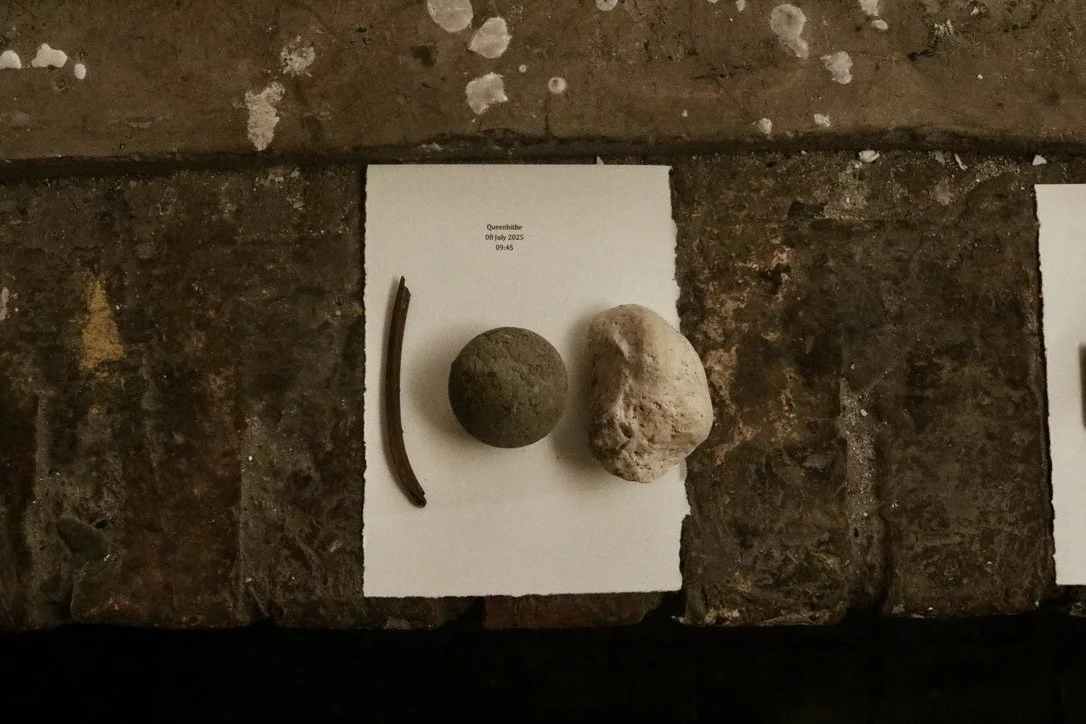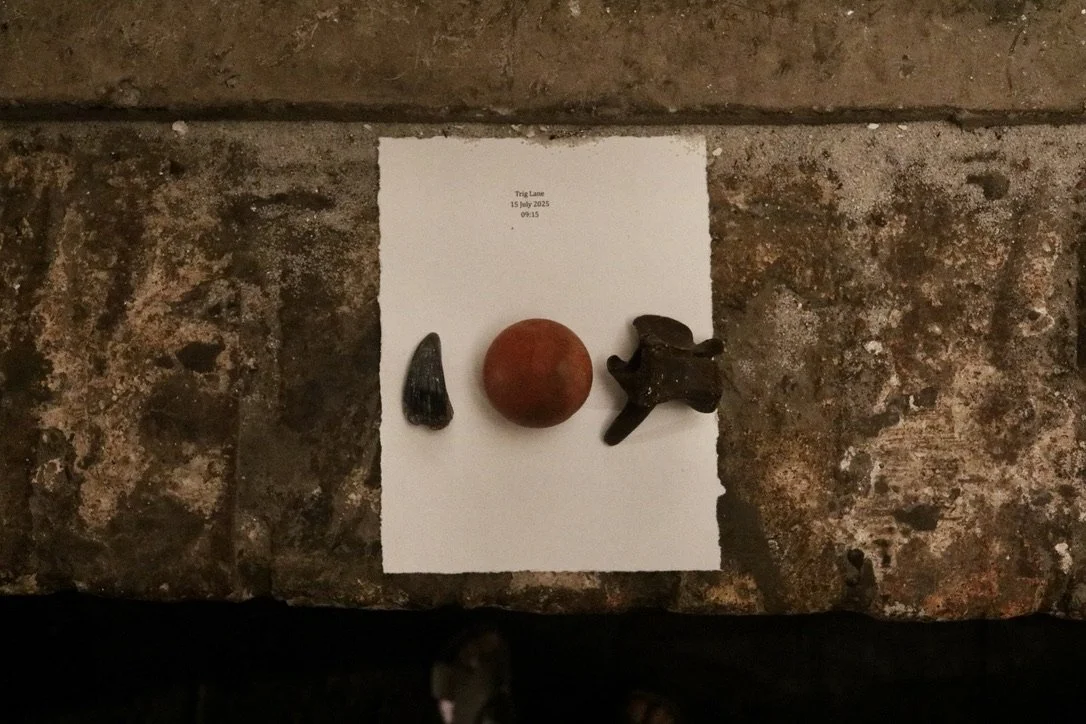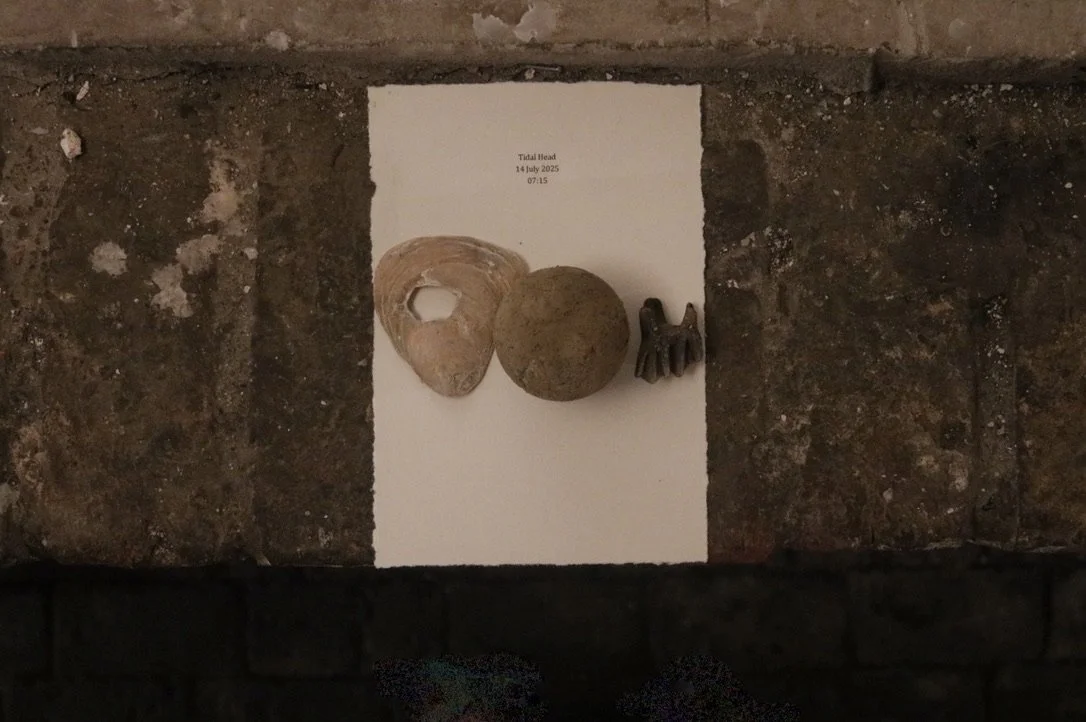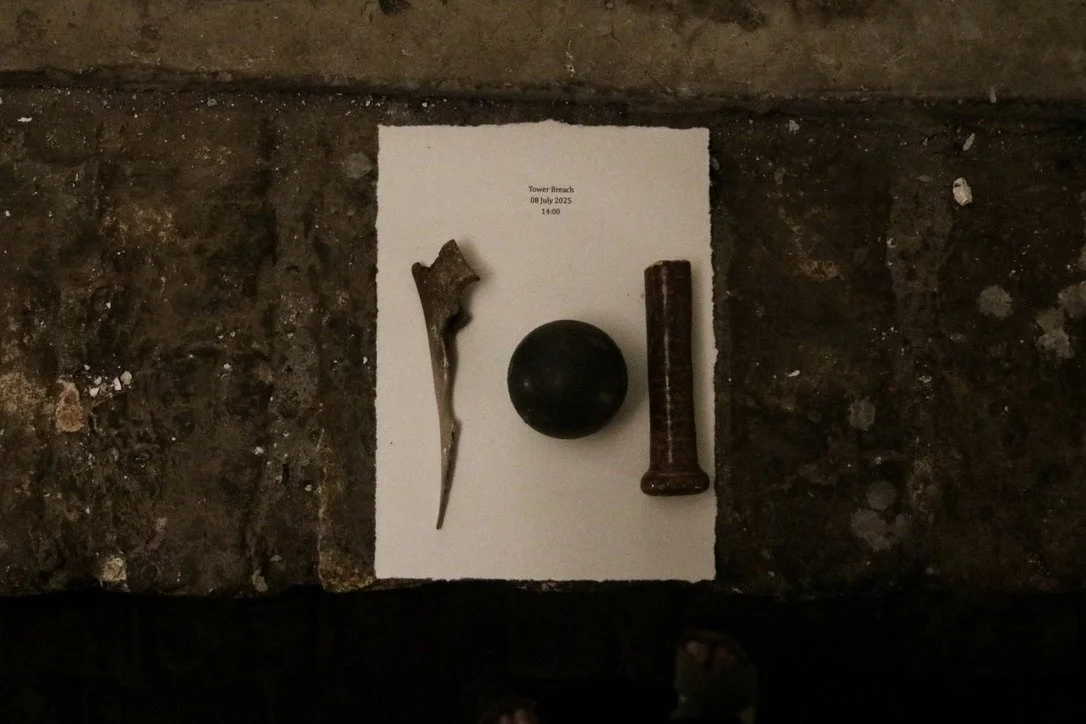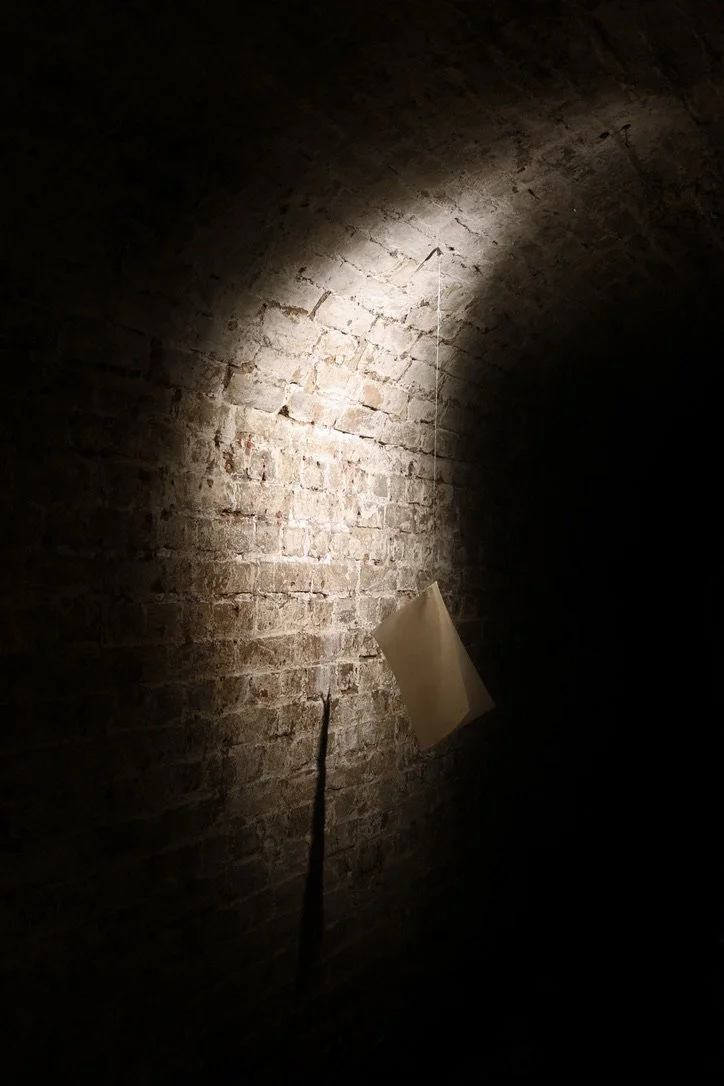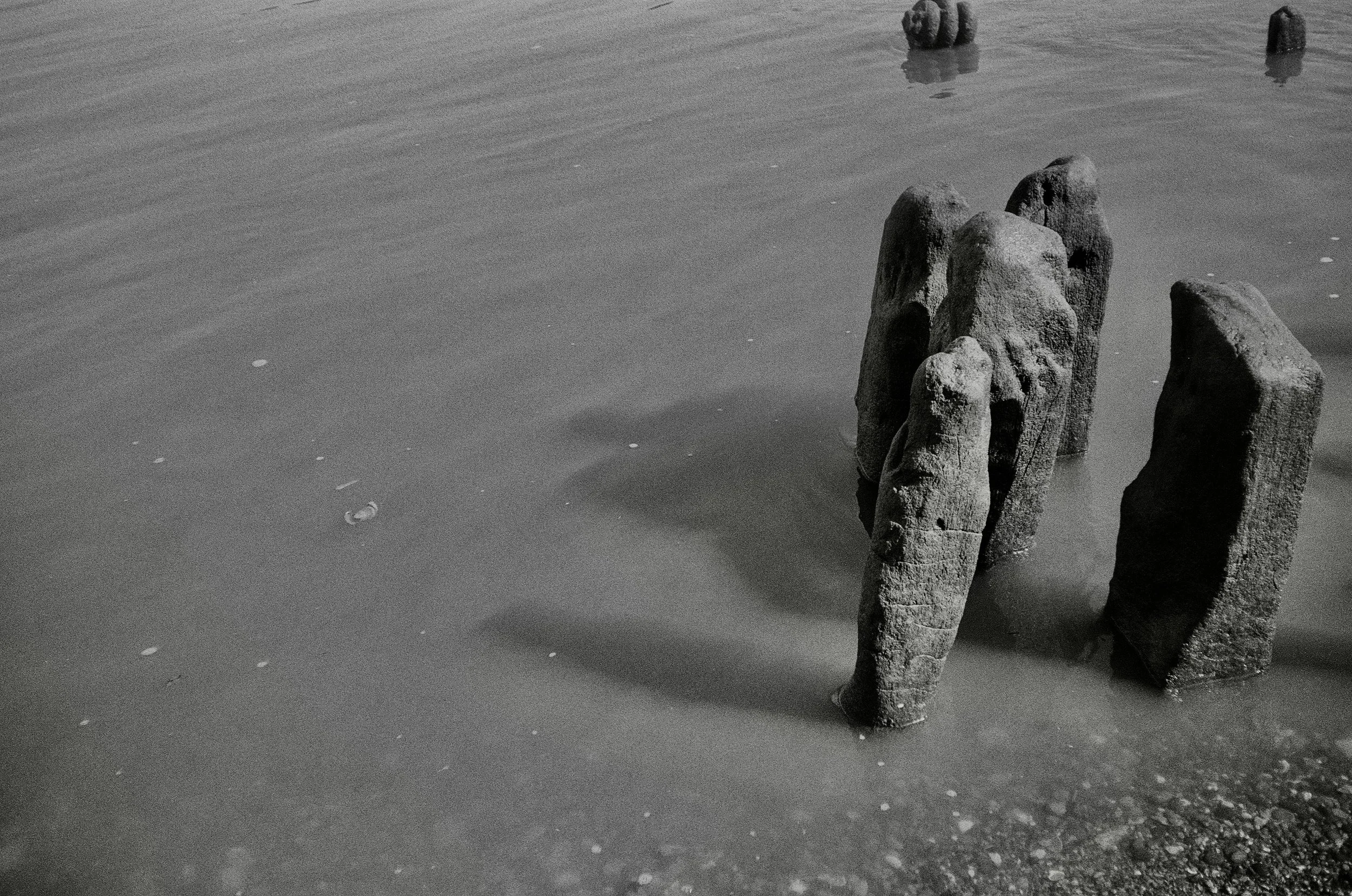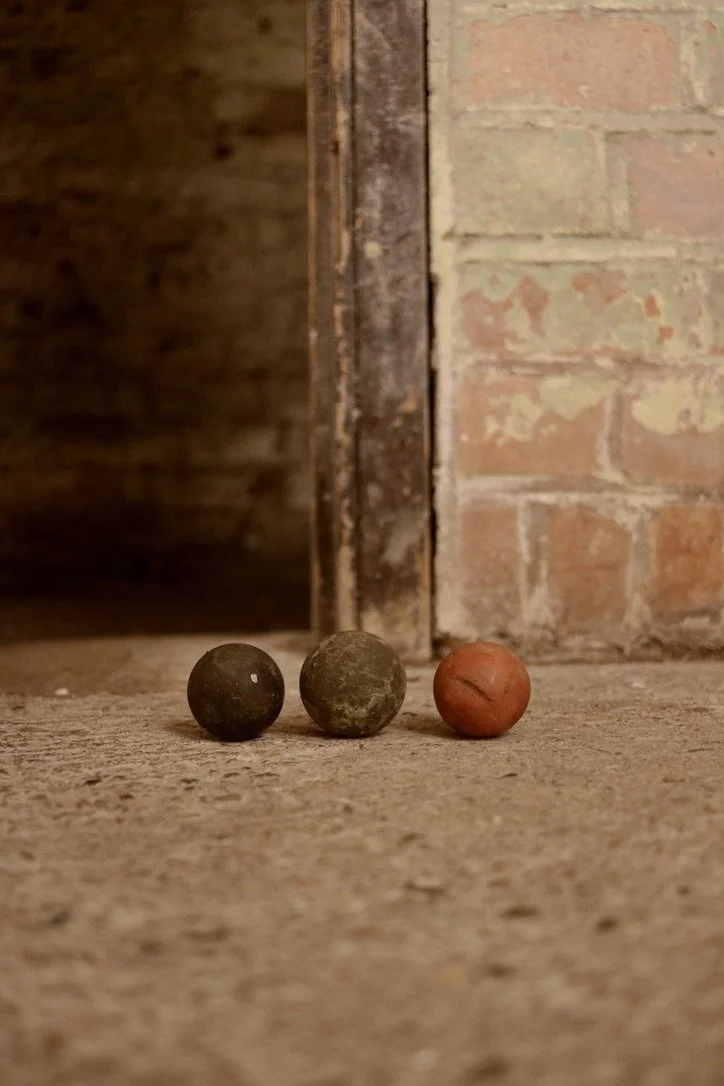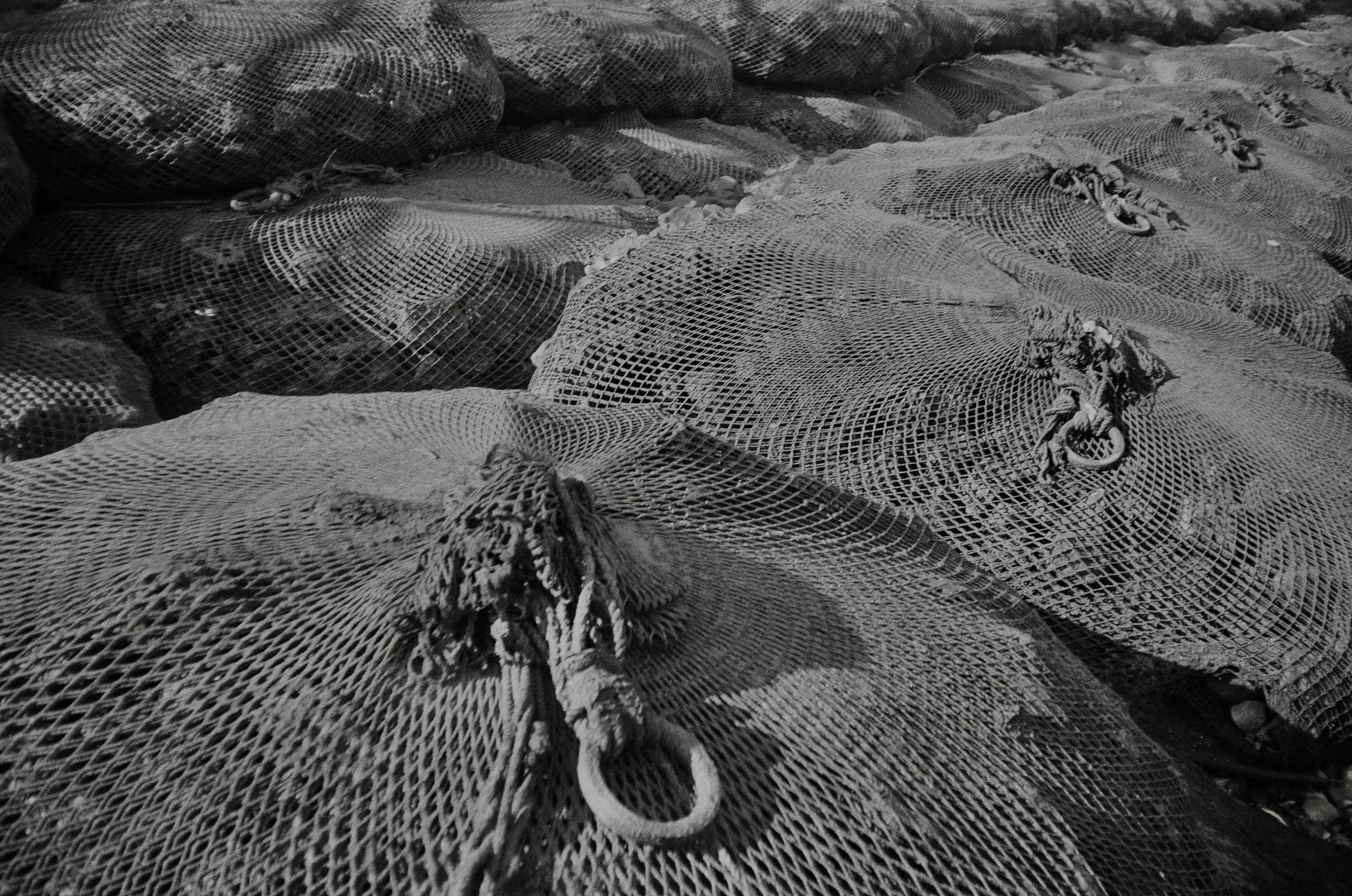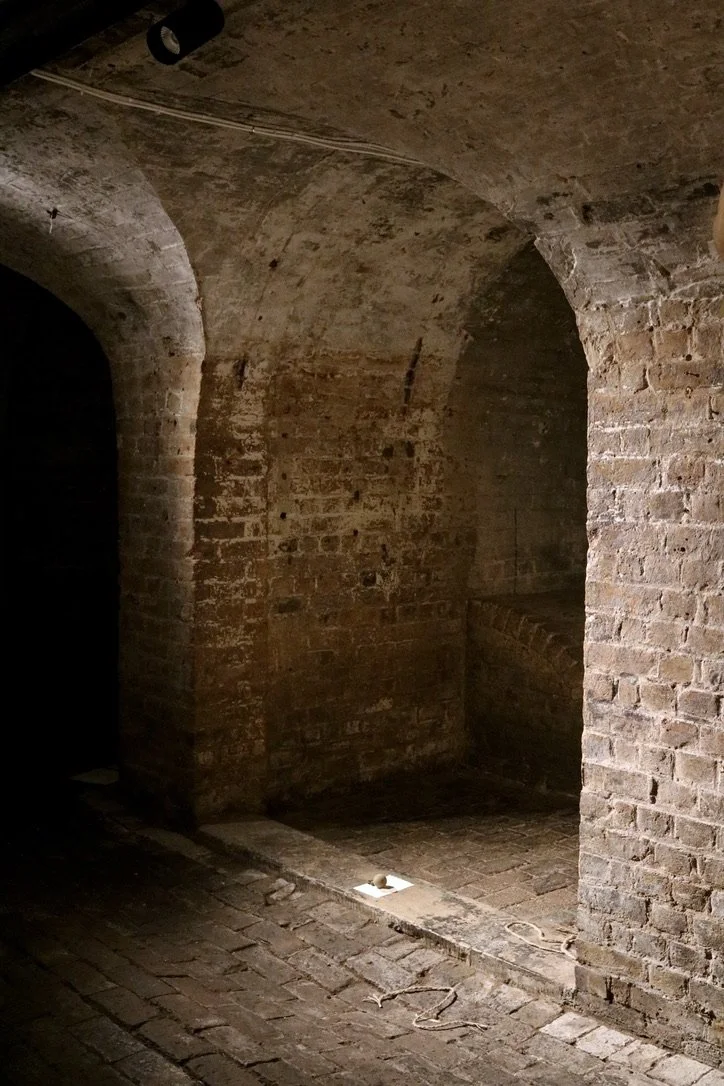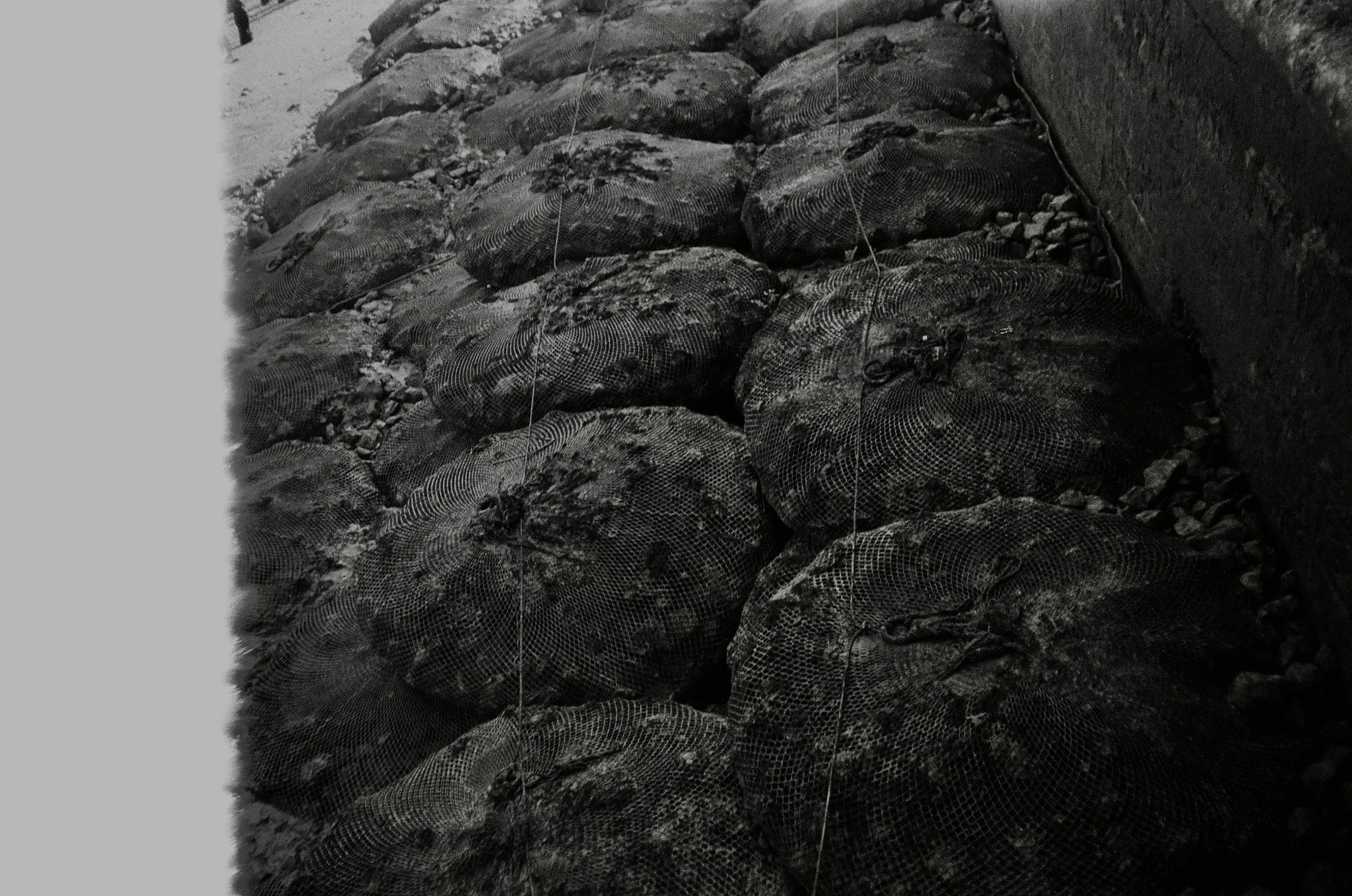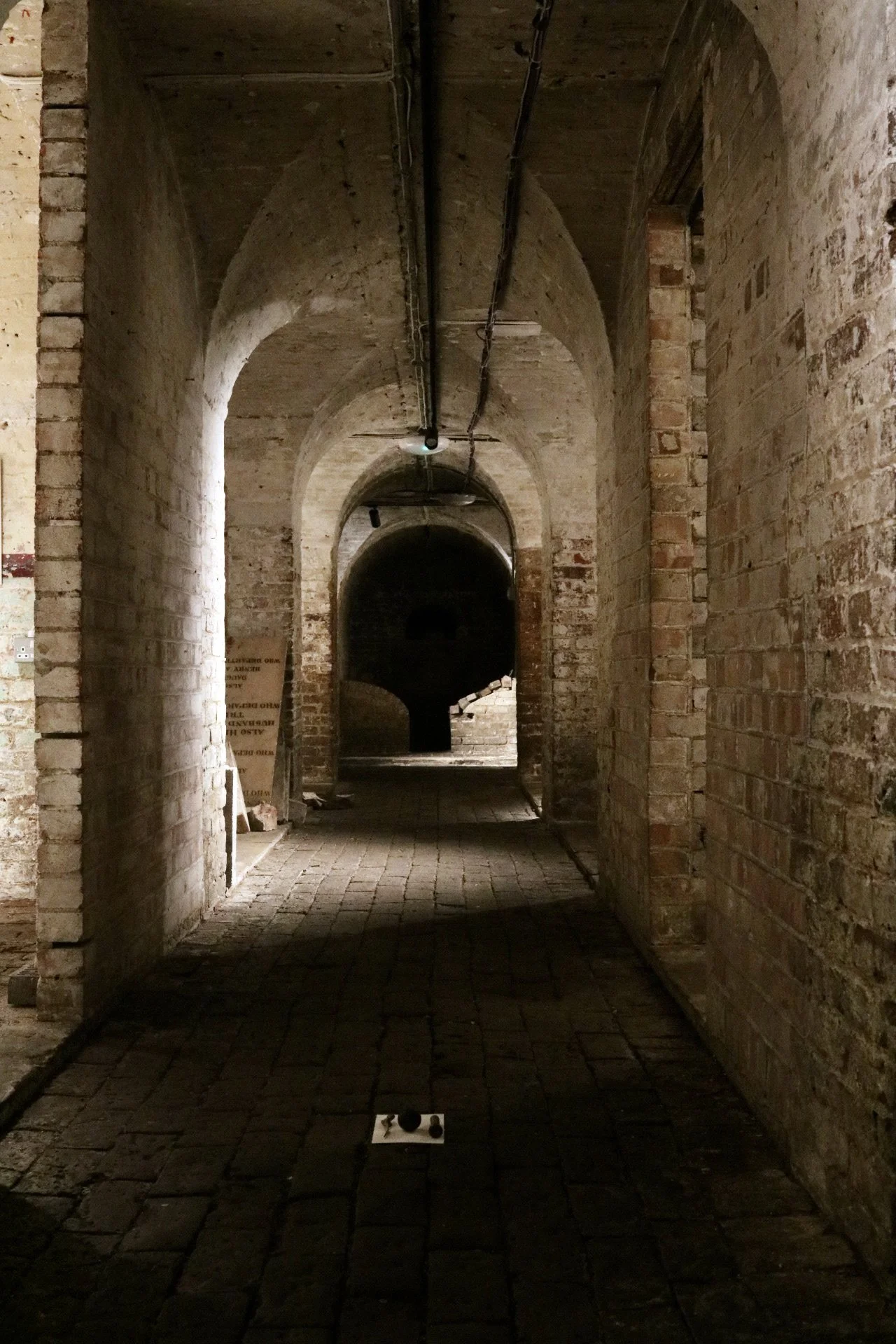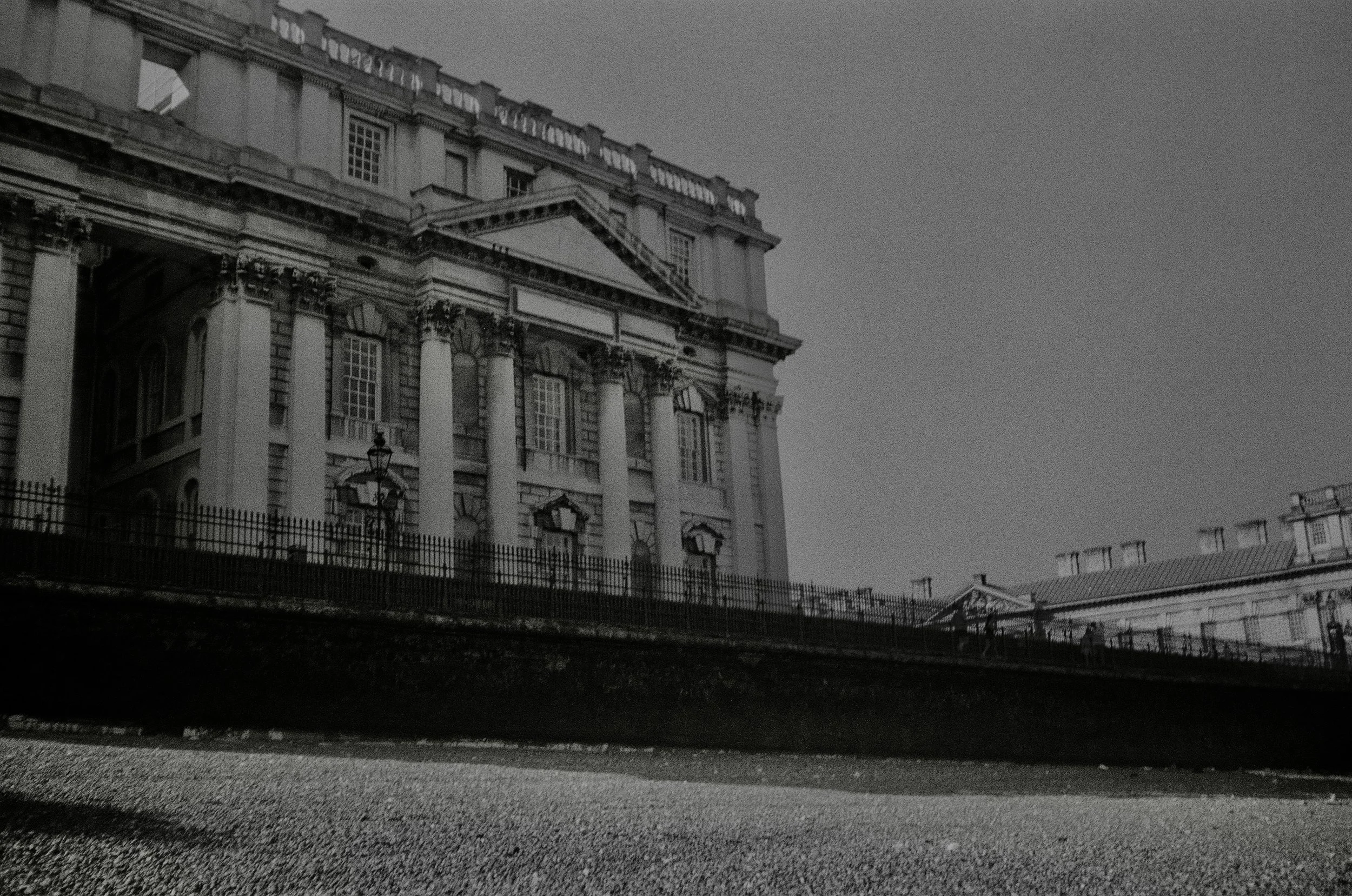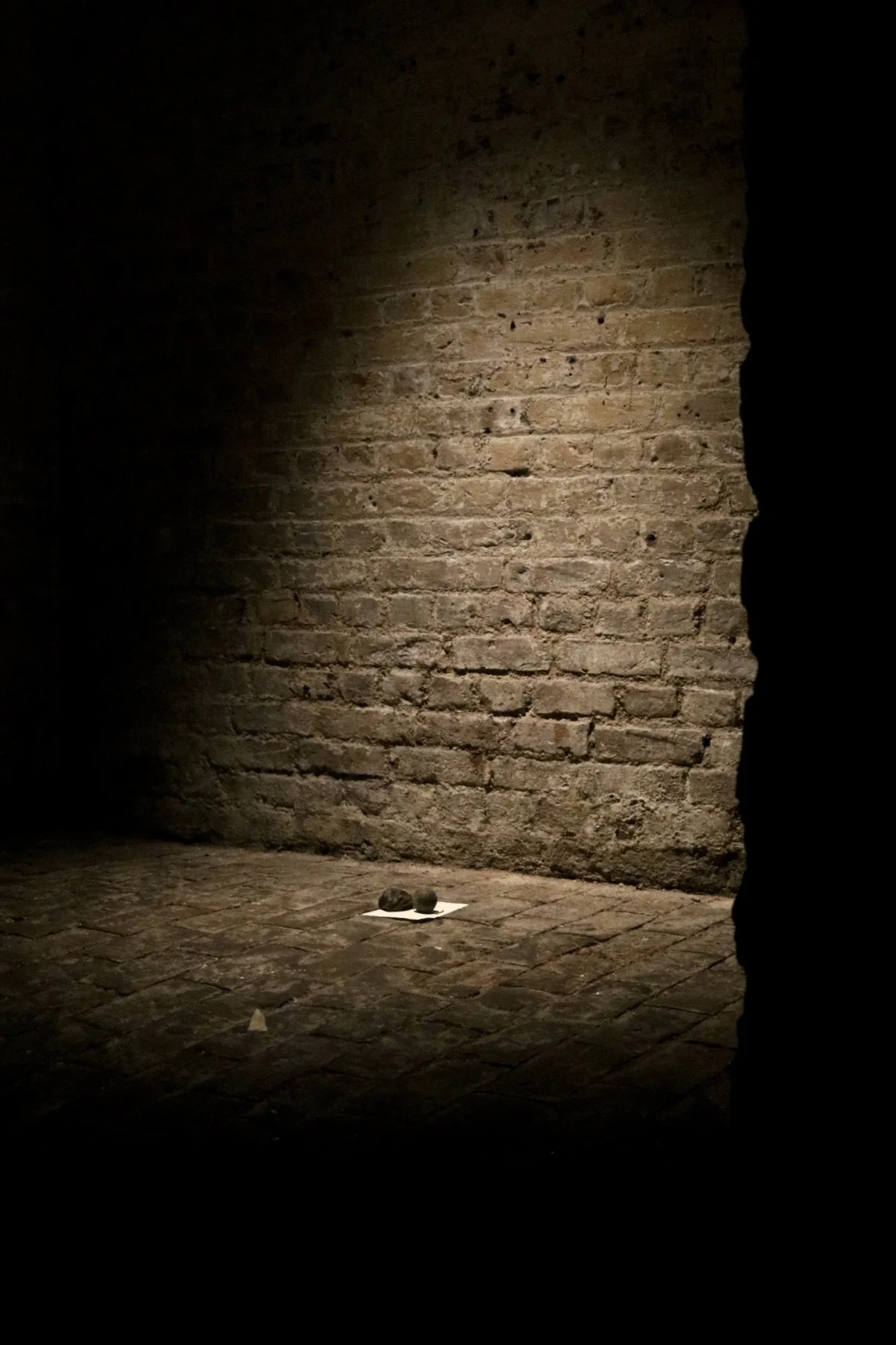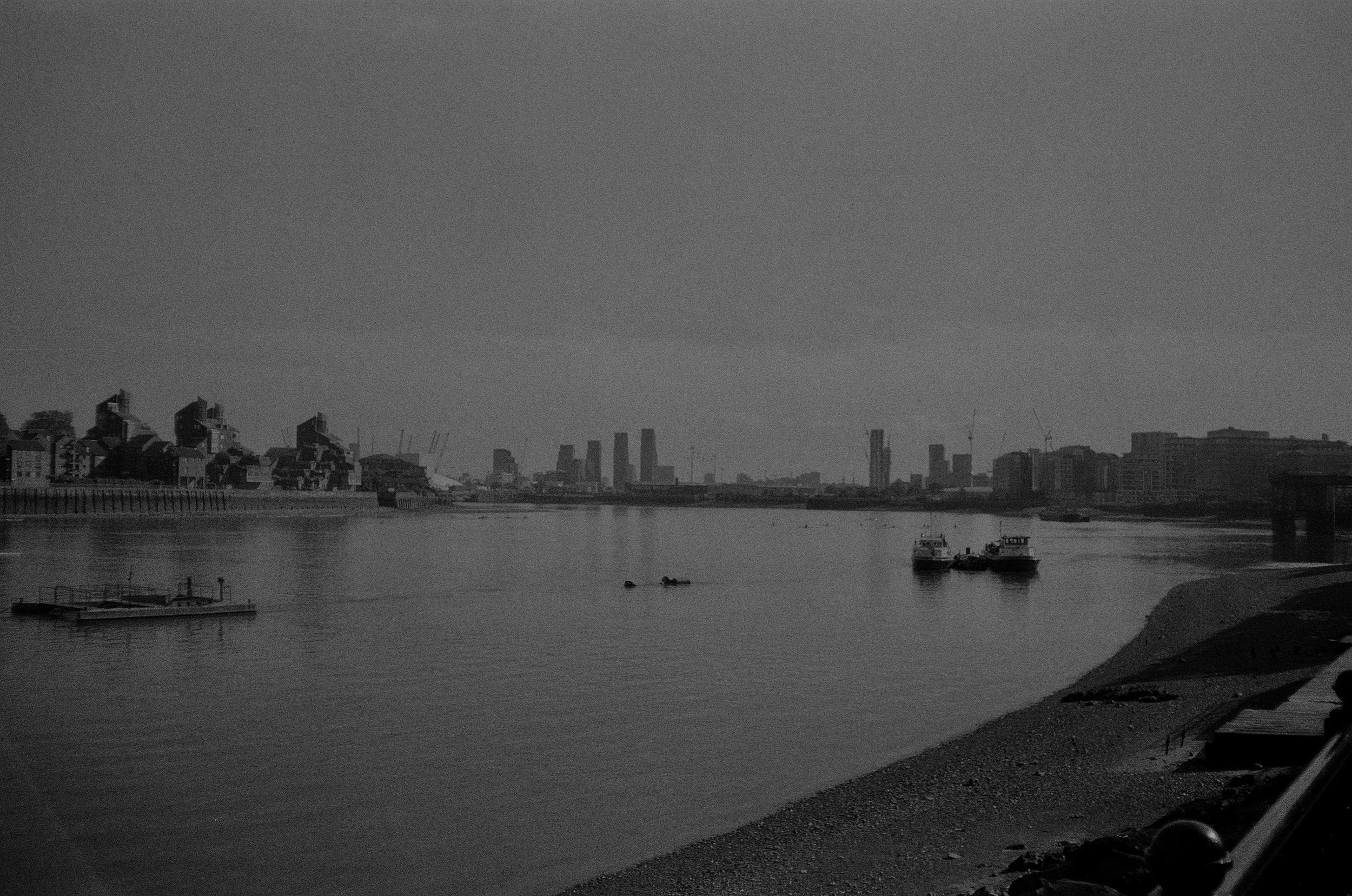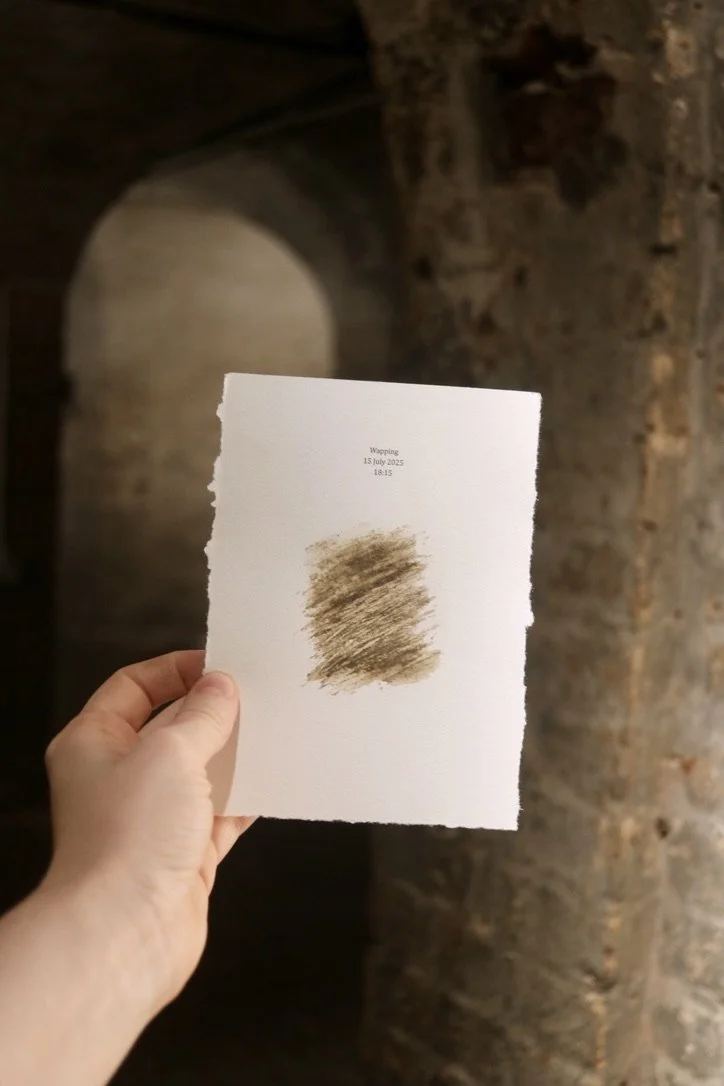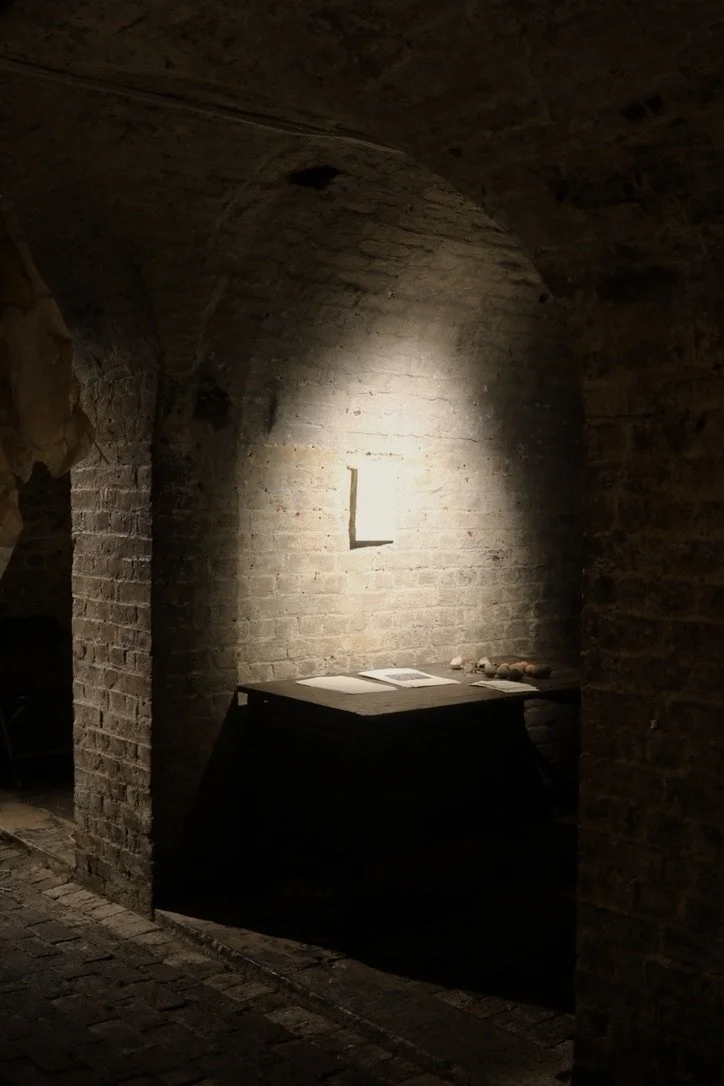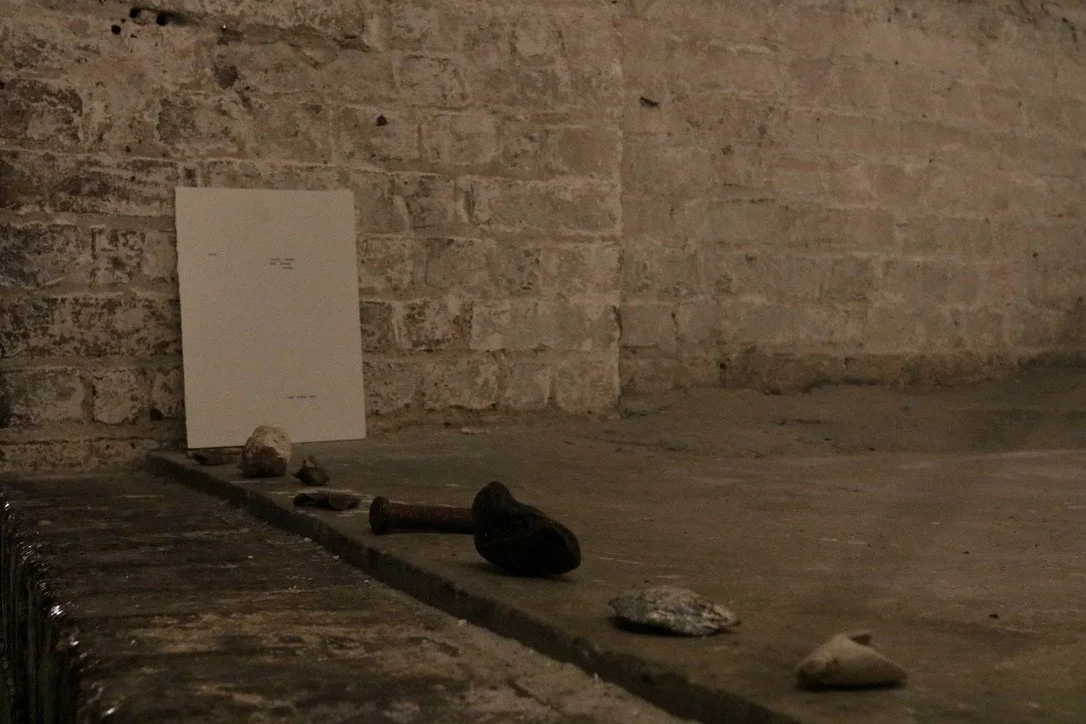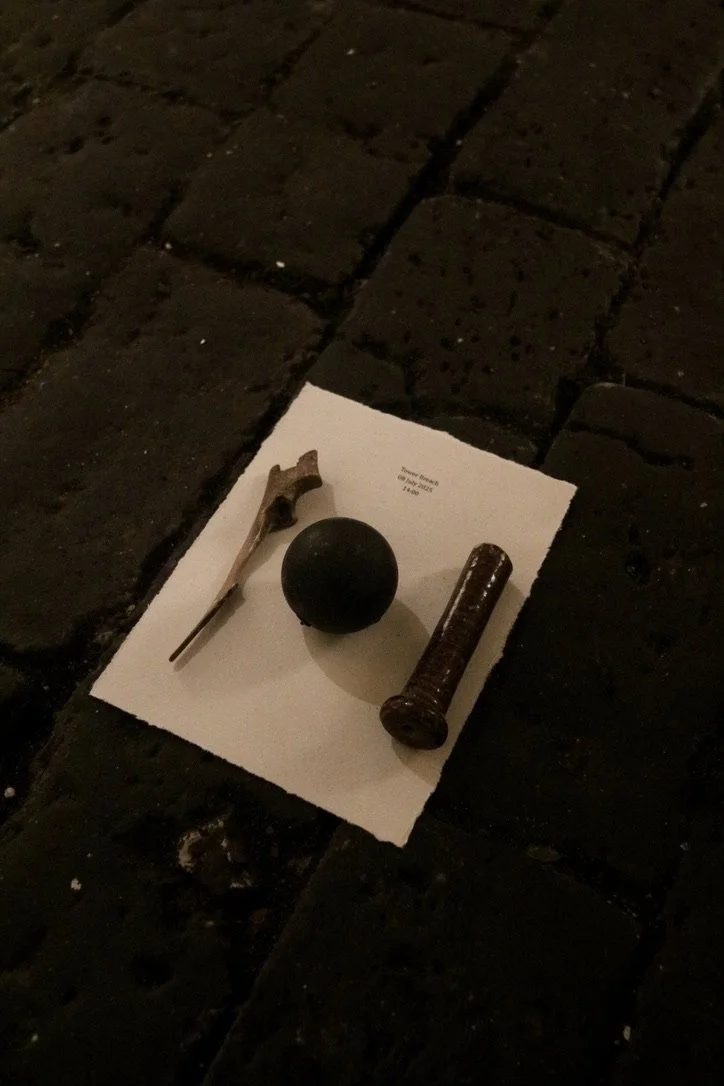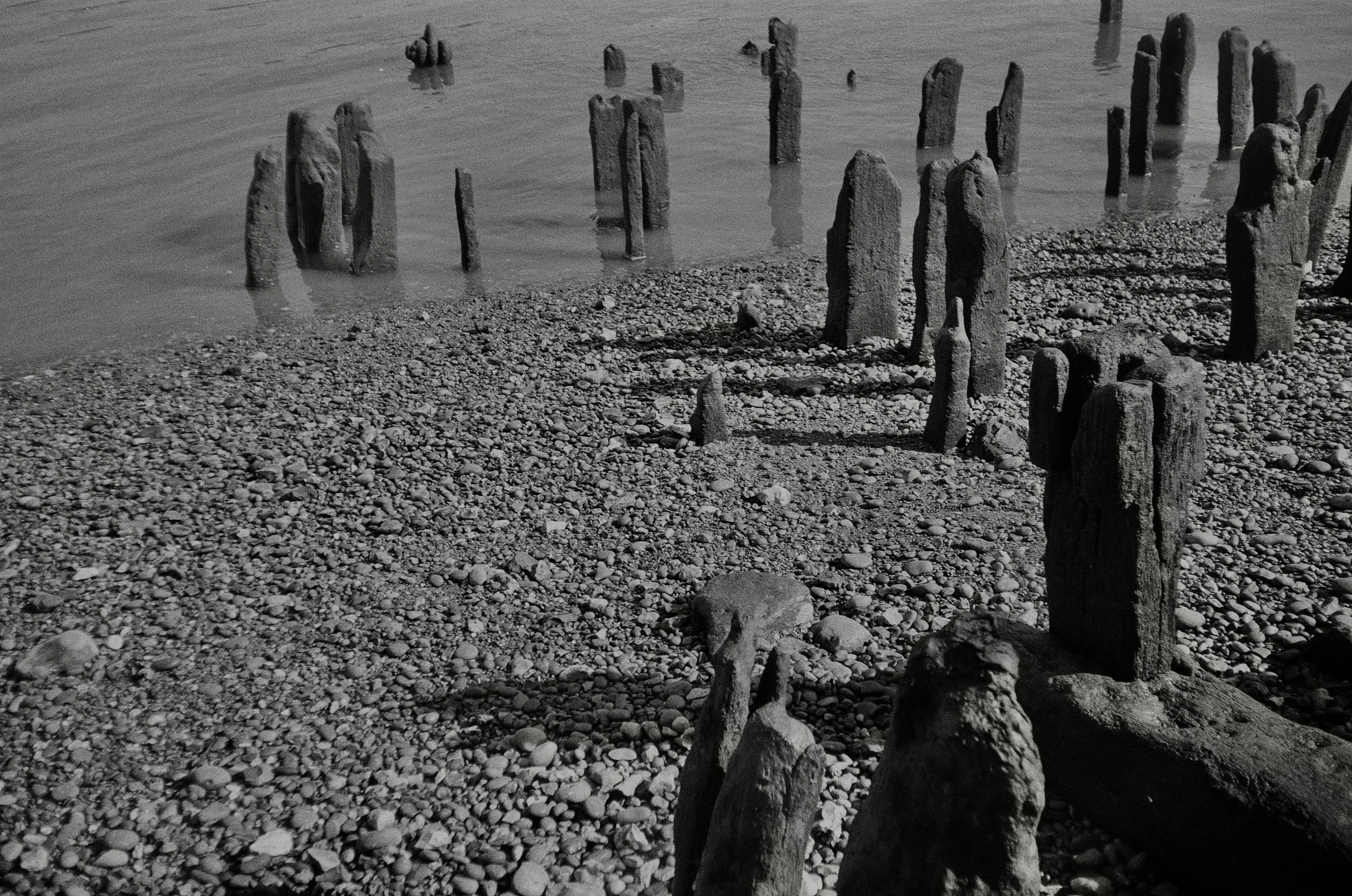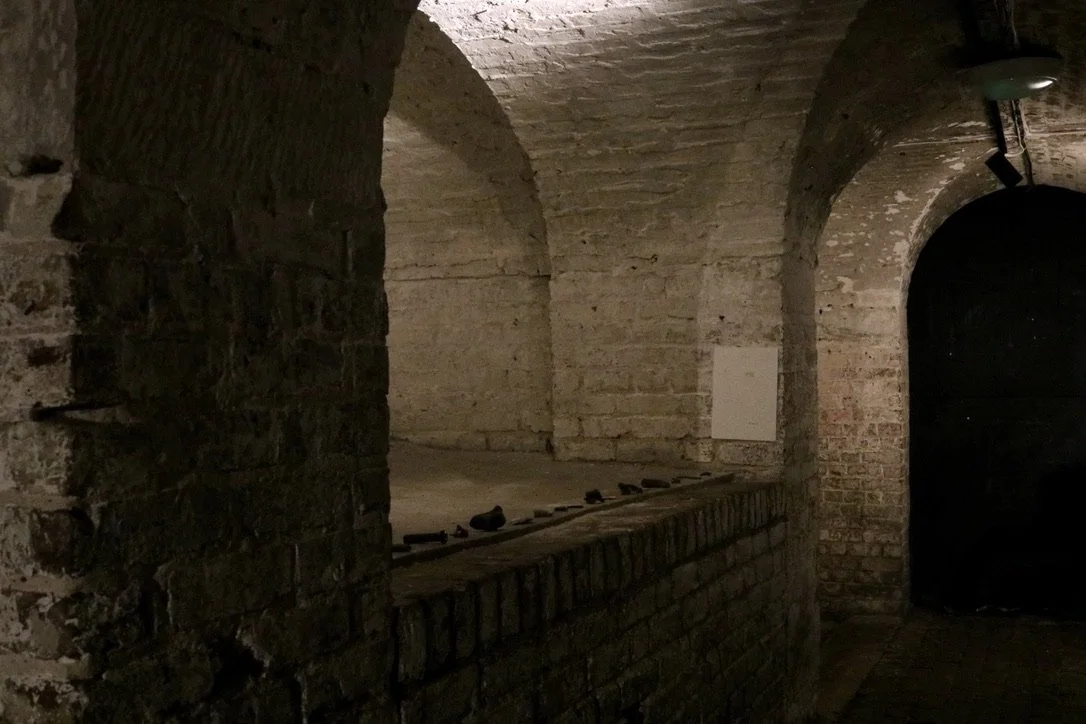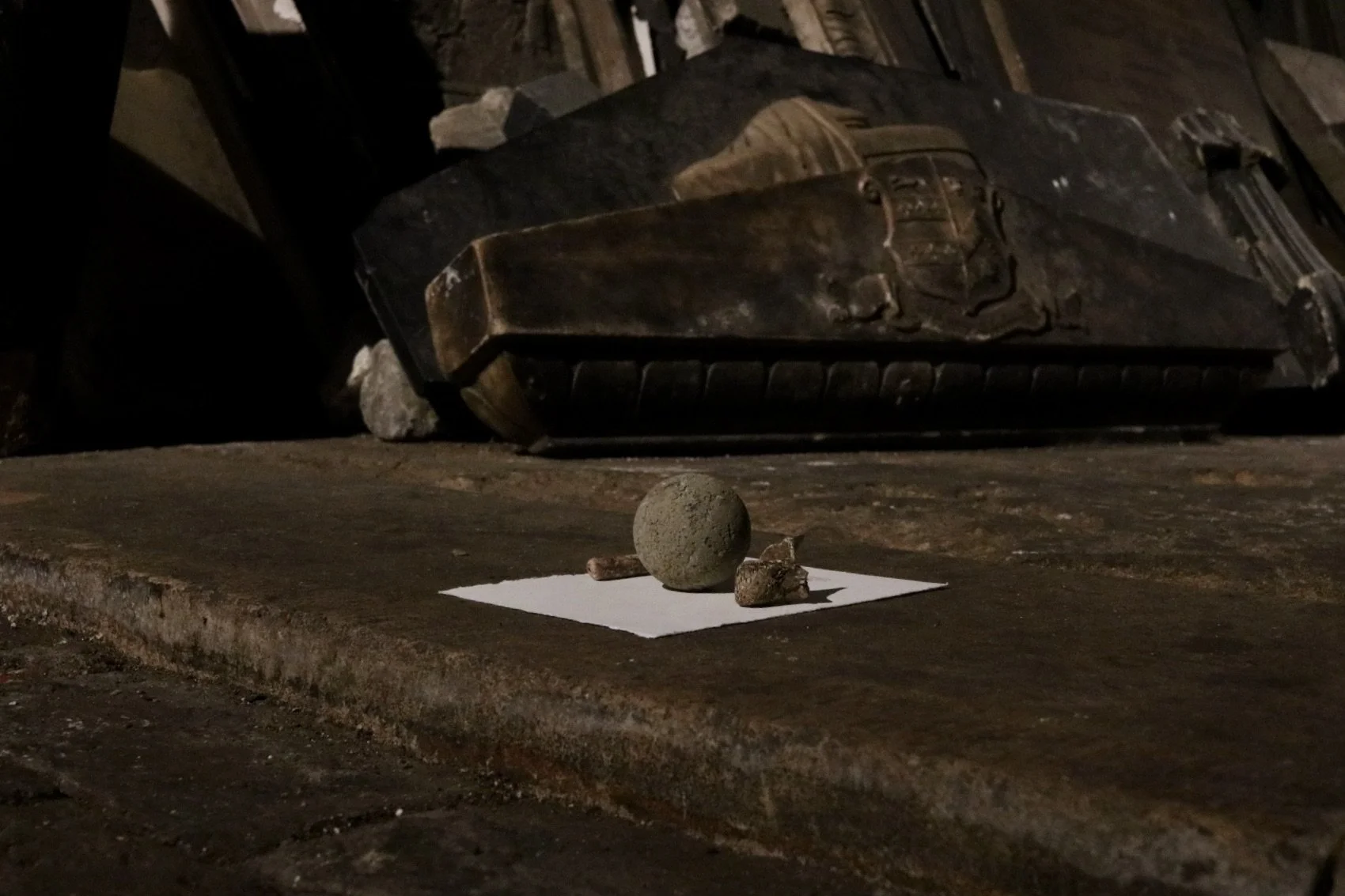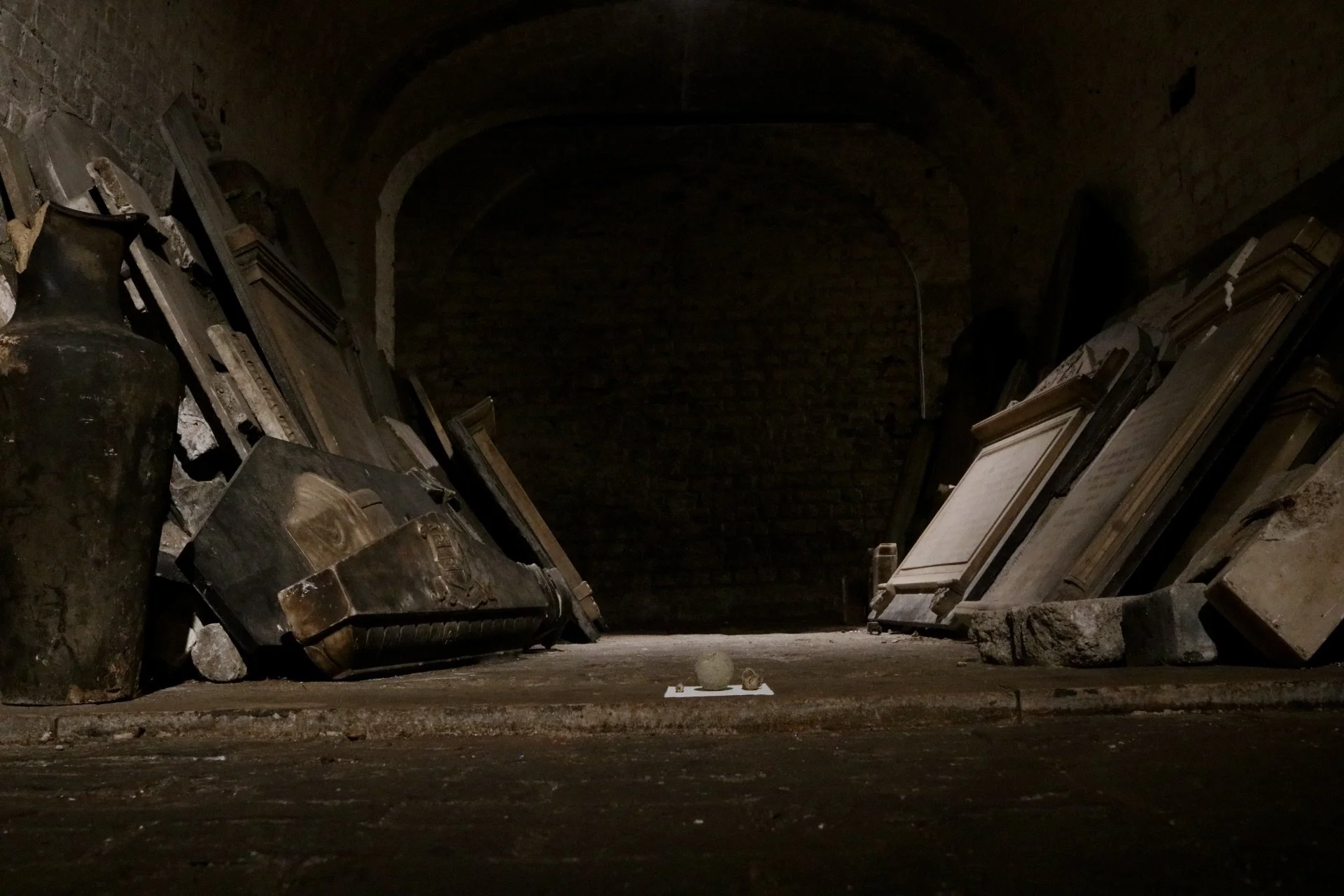TRACE / FOLD, CRYPT GALLERY RESIDENCY
8 - 16 July 2025, The Crypt Gallery, London
A five-day residency exploring found materials from the Thames foreshore and London clay, with installations, photographs, and texts responding to the Crypt’s subterranean space.
Trace / Fold offered the opportunity to explore a project I had long been carrying - a deep, sensory investigation into the rivers of London and the shifting, layered relationships between water, clay, time, and the body. The residency became a space for slowing down and responding intuitively to place, using the unique atmosphere of the Crypt Gallery as a site of reflection and holding. Drawing on months of walking and field research across South and East London, I followed the Thames and the smaller rivers that feed it - from Greenwich and Rotherhithe to Tower Bridge and Trig Lane - documenting a hidden network of watery pathways that both connect and divide the city.
Walking became a central methodology: a practice of deep mapping and embodied observation. As I walked, I collected soil, clay, fragments of brick, discarded materials, and objects eroded by the river - traces of the landscape’s slow transformations. These materials were gathered not as souvenirs, but as evidence of erosion, adaptation, and time. They formed a kind of archive or vocabulary through which I could begin to understand how human and non-human forces shape the city. These collections acted as material witnesses - each object a quiet marker of environmental, social, or architectural change. In this way, I treated the act of collecting as both ritual and research: a way of mapping and noticing, of marking the places where land meets water, where stories and histories have been buried or washed away.
The residency allowed me to bring these findings into conversation with the crypt space - an environment that also holds layers of memory, absence, and time. Working small-scale, and using only what I could carry - cameras, notebooks, cloth, threads - I created a site-specific publication built slowly over the course of the residency. Each day I added to this living document through text, photography, drawing, and stitch. The publication became a durational work in itself: a quiet, accumulative response to the site and my experiences of the wider river landscape. Earth pigments and textile pieces stained with London soil were sewn and folded into its pages, forming a tactile record of the watery commons I had walked and studied.
Throughout trace / fold, I explored the symbiotic relationship between clay and water - how they shape and hold one another, how their interactions mirror the tensions between stability and flux in our own lives. My neurodivergent experience, which informs my perception of time as cyclical, sensory, and nonlinear, shaped this slow, process-led response. In both the crypt and the city, I found echoes of holding and collapsing, of stillness and flow. My actions - folding, stitching, documenting - were grounding gestures, allowing me to think through material and engage deeply with place.
This project asked how we might reimagine urban spaces as fluid ecosystems, shaped not only by infrastructure but by memory, erosion, resistance, and care. It invites us to think of the city as something porous and shifting, where histories - like water - rise and sink, shape and soften, return and disappear. By drawing attention to the hidden layers of the urban landscape and offering an alternative form of mapping through collected materials, bodily presence, and slow making, trace / fold becomes an invitation to listen differently to the land, to the river, and to ourselves.
